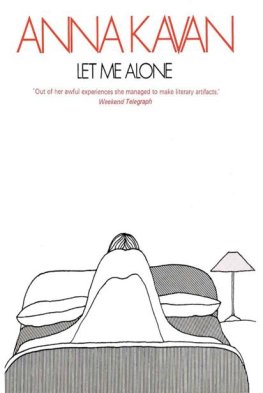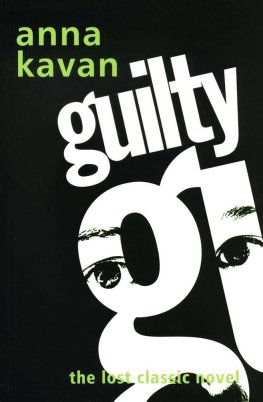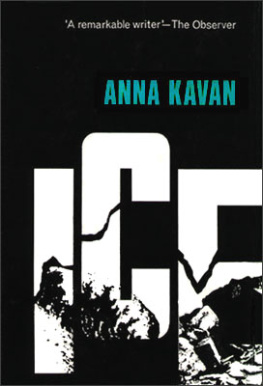All day long, in the tamarinds behind the house, a tropical bird keeps repeating its monotonous cry, which consists of the same three inquiring notes. Who-are-you? Who-are-you? Who-are-you? Loud, flat, harsh and piercing, the repetitive cry bores its way through the ear-drums with the exasperating persistence of a machine that cant be switched off.
An identical cry echoes it from further away, calling out the same unanswered question, which is transmitted to other birds of the same species, until hundreds or thousands of them are shouting it all together. The ceaseless cries come from all distances and directions, from everywhere at once. Some are louder than others, or more prolonged; but all have the same infuriating mechanical sound, and seem devoid of feeling they dont express fear, love, aggression, or anything else as if uttered simply to madden the hearer. The intolerable thing about them is the suggestion that they are produced by machines nobody can stop, which will eternally repeat the question no one ever answers.
As probably they do in another dimension, to which the listener may be conveyed in delirium until the ultimate nightmare climax when suddenly everything stops
The tamarind trees, old and huge, neither quite in nor quite out of leaf, tower over the house, creating a tantalizing illusion of shade, in this burning climate. But their sparse foliage and thin twisting branches cast only a confused net of shadow that gives no relief from the sun. The giant trees seem to exist principally as perches for the many brain-fever birds which, ever since dawn, have been hammering out their perpetual unanswered question.
Now the sun is low in the sky. Its dazzle catches the tops of the trees, which merge indistinguishably into one another, the birds invisible in the glare, among the tangle of spidery branches. All one sees is the tremendous size of the tamarinds, the web-like intricacy of their interlaced boughs, speckled with small, dry-looking leaves of no special colour.
Though built only a few years ago, the house below has already been touched by the galloping decay of the tropics, and is infested by rats and termites. Brick below, the upper storey stained wood, it looks vaguely neglected, and seems to crouch, beaten down by the heat, having been constructed without regard for coolness, its insubstantial walls cracking, its woodwork warped and bleached by the sun. A few banana trees grow almost touching the walls, and tufts of their long, narrow leaves poke through the glassless windows, when these are not covered by metal fly-screens or wooden shutters, several of which are defective, so that they hang crooked.
In the middle of the house a square porch shades the front door and the car standing there, its flat roof railed round as if it were meant for a sitting-out place, though, facing straight into the sun, it is useless for this purpose during the day. It overlooks, and is in full view of, the road, a dirt track with two deep parallel ruts worn by the wheels of the bullock carts which compose most of its traffic.
The bare, brownish compound dividing the house from the road is intended to be a garden, though nothing grows there but a single tall dilapidated palm tree in the middle. Its topmost leaves wave vigorously, with a clattering, almost metallic sound in occasional gusts of hot wind; but the dead lower leaves, which should have been removed, hang down in an untidy, decaying mass round the trunk. Beyond the road stretches a disorderly terrain, confusing to the eye, which retains no clear impression of it. Here the plain meets stony, scrub-covered hills, invaded by spearheads of jungle, spreading down from higher hills in the background. A group of great forest trees, entangled in creepers as thick as an arm, creates a sudden black area of shade on the right of the house, but unfortunately this doesnt reach anywhere near it. To the left is a swamp, full of snakes and leeches, covered by the large, bright green platters of fleshy plants growing in the treacherous mud these leaves conceal.
As the sun sets, colour drains visibly from the sky, against which the treetops behind the house, freed from dazzle, suddenly stand out clearly in all their intricate complexity. It should now be possible to see the brain fever birds, which at last are silent. However, they remain invisible, either because their immobility makes them indistinguishable from the involved pattern of the branches, or because theyve already flown off to different roosting places.
Far more striking than their non-appearance, is the abrupt cessation of their nerve-racking cries. The eternal, monotonous question without an answer has woven itself into the whole fabric of the day, and even now still leaves behind it a soundless echo, like some obscure irritant of the mind.
Daylight vanishes in six minutes flat, leaving only a faint violet smear marking the western sky. Stars flash out one after the other. In the swamp, frogs have begun making a great noise, which steadily grows louder, an incessant chorus of croaking, gulping and barking sounds working up periodically to a climax, when it is called to order by the punctuation point of a startlingly deep, gruff, batrachian boom, louder than all the rest, after which the cycle builds up again.
The moon has not yet risen. Only a faint ghostly sheen of starlight hovers over the marsh. The house is to be heard rather than seen, its timbers emitting cracks like pistol shots as the air cools and the faulty structure contracts and subsides. A thin penciling of horizontal light-lines marks the position of windows. Two, longer than the others, open on to the flat roof of the porch, and through these a young girl emerges, advancing towards the rails they cut her off at the knee seen from below, as she leans upon them. The light from inside the house isnt bright enough to show the colour of her dress, which is probably white.
She raises both hands and lifts her hair for a moment to cool her neck, then lets it fall and again leans on the rail. She is quite motionless, leaning forward slightly as if trying to see something on the ground below; which is impossible, the darkness being impenetrable down there. Her hair, no darker than her dress, hangs almost shoulder length in a long, childish bob, unskillfully imitating the style known as page boy.
The racket the frogs are making doesnt drown the exasperating cry of the brain-fever bird, which has crept right into her head. Divorced from its cause, this lingering irritation is able to attach itself to anything in the dark, where nothing is distinguishable from anything else. She associates it in turn with the heat, the frogs, and then with the jingle and flickering gleam which would be the sole evidence of a passing bullock cart, if the driver did not keep up a loud chanting to protect himself from the demons of the swamp.
The girl never moves an inch; does not look round when a dignified barefooted servant, with a white turban and a grey beard, comes to the window behind her. She hears him, but gives no sign. And he, having watched her inscrutably for a while, withdraws in silence, glancing back disapprovingly from her to the open windows, through which clouds of mosquitoes and other insects are streaming continuously, attracted by the light inside.
Around the bare electric bulb, which the white saucer-shaped shade does not hide, they circle in ever-increasing density, almost obscuring its light. Their numbers make them unrecognizable in flight, as they are in death, and their scorched, charred, singed, or still spasmodically twitching bodies pile up on the tabletop and finally overflow on to the bare unpolished floorboards beneath. Here they are hidden by the tables circular shadow, though a few feebly and lopsidedly drag their maimed legs, fire-shriveled wings, and broken antennae some inches further, before they finally twist into lifeless shreds of detritus.















